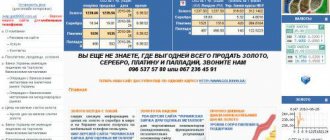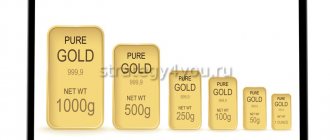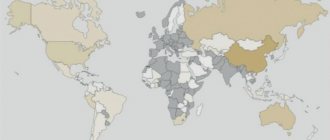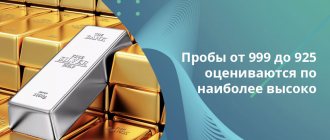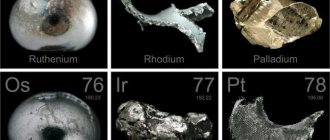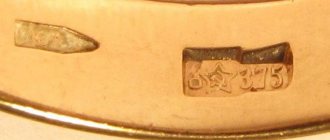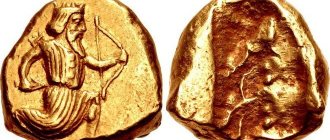Unallocated metal accounts (UMA) can no longer be called a novelty among banking services in the field of savings and investments. Many investors consider metal accounts as a means of hedging the risk of a collapse of the national currency and even partially global economic risks. The list of banks providing clients with the service of maintaining accounts in precious metals is growing every year. How to choose a bank to open compulsory medical insurance?
An impersonal metal account (UMA) is a bank account for accounting for precious metal in an impersonal (abstract) form, without reference to specific bars with individual characteristics.
There are two types of metal bills:
- Term compulsory medical insurance is similar to a fixed-term bank deposit with interest accrual, but in precious metal. Naturally, if the contract is terminated before the agreed date, no interest is paid.
- Current compulsory medical insurance (on demand) - similar to a demand deposit in precious metal. Interest is not accrued on current impersonal accounts, and the account can be closed at any time.
What are the features of impersonal metal accounts?
From a price point of view, opening a metal deposit (OMC) is similar to purchasing physical precious metals in bullion. The mechanism of operation of compulsory medical insurance is reminiscent of purchasing bullion in installments. In this case, it is not rubles, dollars or euros that are credited to the account, but grams of silver, gold, palladium or platinum. At any time they can be sold for money, but in the same bank where the deposit was opened. There is an option to receive bullion in your hands. But at the same time, according to the laws in force in Russia, you will have to pay VAT of 20%, calculated on the basis of accounting quotations of the Russian Central Bank on the date of acquisition. If you do not take the precious metal from storage, then you do not have to pay tax. It turns out that by opening a metal deposit, an individual can legally avoid the costs associated with paying value added tax.
Metal accounts are similar to regular bank deposits in that they can be of two types - “term” or “on demand”. The unit of measurement for the amount of metal is 1 gram. In Russian banks, gold, silver, platinum and palladium OMS are available for opening.
What does profit consist of?
It is no coincidence that we mentioned the long-term perspective, because... opening compulsory medical insurance for a short period of time does not make sense. The cost of metals increases gradually, this process can take several months at a minimum and several years at a maximum, therefore, the more income you want to receive, the longer the period you should count on.
As a rule, banking companies open and service compulsory medical insurance, receiving their profit at the time the deposit expires, based on the difference between purchase and sale. Please note that if you want to receive income not in money, but in bullion, then you should not take it outside the branch to avoid paying tax.
We have collected original reviews on this topic here, reviews from real people, many comments, worth reading.
If we talk about profitability, it will depend on the quotes established by the Central Bank of Russia. Remember that you will sell and buy at prices set by your bank.
What profit can you expect when opening a compulsory medical insurance?
One type of capital is a precious noble metal. However, it is a mistake to consider it as a speculative market instrument for making short-term profits. The prices of precious metals with a monetary function, such as silver and gold, fluctuate daily against the euro, dollar and ruble. But the main advantage of such precious assets is their protection from inflationary processes. Their intrinsic value and purchasing power are highly stable in the long term. Over short periods of time, price changes can be significant. Such fluctuations can lead to losses. You can protect yourself from risks by dealing with options. Therefore, it is necessary to exercise maximum care when choosing a temporary entry point into the market for opening a metal deposit, as well as the period for placing investments. It is important to restrain yourself from buying at maximum prices. It is not recommended to spend your last money on purchasing precious precious metals or use credit funds for this.
When deciding to open compulsory medical insurance, it is necessary to build on the current charts with the dynamics of gold and silver prices. In the long term, precious metals always increase in value. This is explained by the very essence of inevitable inflation in any economic system.
Everyone knows the apt folk saying that money in your pockets only becomes wrinkled. This biting wisdom can also be applied to precious metals. Taking this into account, if you open a metal deposit for a long time, then it is worth asking what dividends are accrued on it. In the case of compulsory medical insurance, the interest rate cannot be too high for objective economic reasons. However, it contains a real increase in your precious capital. Against the backdrop of daily price fluctuations in the precious metals market, this increase may seem miniscule. But in the long term, it is the interest accrued on the metal deposit that creates a stable and time-guaranteed income.
What to buy?
Last year, platinum compulsory medical insurance turned out to be the most profitable. Simply by opening an account at the end of 2006 and closing it at the end of 2007, you could make a profit of almost 26% per annum in rubles .
In 2007, it was possible to earn more than 20% per annum on compulsory medical insurance in gold. But the passive strategy of investing in silver and palladium turned out to be unsuccessful; account holders in these metals lost outright to inflation (11.9%), and some suffered direct losses. Which metal to bet on this year is not an easy question. The fact is that the year started very quickly. In January, world prices for gold increased by 10.4% (in London fixing prices**), for silver - by 13.4%, for platinum - by 13.2%, palladium looked the most modest of all, but it also rose in price by almost 5%. During the January rally, metal quotations reached record high levels, and gold and platinum even updated their historical highs.
“It is not advisable to invest in precious metals now; we need to wait for a correction. You can buy gold at a price of $850 per ounce,” says Alexey Vasiliev. The world's largest banks doubt that growth will continue. At least judging by the consensus forecast compiled from their data, gold, silver, palladium and platinum will be much cheaper this early next year .
Given the pessimism in forecasts regarding further growth in prices for precious metals, the “set and forget” strategy, the most common among CHI holders, may bring losses this year. In order to make money, apparently, you will have to work hard and move from passive account management to active operations. This year there is a chance to see “price swings” for all precious metals; these fluctuations should be used to make a profit. The commandments of a speculator have long been formulated: when the price falls, you buy, when the price rises, you sell. “I think we will see more lows and highs. Until April-May, gold prices may rise to $1,200. By the summer in the United States, all the passions associated with the mortgage crisis will probably have settled down, the Fed will begin to raise the discount rate, the dollar will then begin to strengthen, and gold, accordingly, will fall. Therefore, a deep correction is expected for this metal in the summer. The strategic level at which you can safely buy gold with all the money you have is $740 per ounce, and this level is quite realistic. In autumn-winter, at the peak of demand for gold (wedding season in India, and this is the world's largest consumer of gold), prices will go up, and then it will be possible to take profits, advises Alexey Vasiliev. — Silver prices will follow gold. In the first half of the year, the price of silver may reach $18 per ounce, and in the second half of the year, a correction will begin for silver, as well as for gold. In general, you need to be careful when investing in silver. Theoretically, it could drop significantly, because the cost of its production is quite low - only $5-7 per ounce, while large reserves of silver are now concentrated on the world market.” If gold and silver are considered investment metals, then platinum and palladium are considered industrial metals, since their pricing is more influenced not by the situation on the world financial markets, but by the demand of manufacturers. Considering that the demand for platinum is growing, the chief trader for operations with precious metals of Uralsib Bank Valery Okulov
does not exclude the possibility that its price may reach $2000 and then go down. But he doesn’t expect any surprises from palladium; according to him, supply and demand for this metal are now balancing each other. Apparently, palladium will be the quietest precious metal this year, which makes it uninteresting for speculation.
*
An impersonal metal account is an account denominated in grams of precious metal (gold, silver, platinum, palladium), through which it is possible to conduct purchase and sale transactions without providing cash metal; “virtual” grams of metal are credited and debited from the account.
**
The London fixing is a generally accepted global indicator of prices for precious metals, set twice a day (13.30 and 18.00 Moscow time).
Current price of precious metals and consensus forecast* for 2008, $/ounce
| Metal | 08.02.2008 | I quarter | II quarter | III quarter | IV quarter |
| Gold | 916,2 | 834,64 | 827,27 | 821,67 | 790,5 |
| Silver | 16,9 | 14,89 | 14,69 | 14,74 | 14,39 |
| Platinum | 1860 | 1499,29 | 1553,33 | 1537,5 | 1535,83 |
| Palladium | 432,5 | 369,17 | 384 | 388 | 391 |
| * Based on forecasts from Merrill Lynch, Barclays Capital, Deutsche Bank, BNP Paribas, Standard Chartered Bank, Commerzbank, Wachovia, Australia and New Zealand Bank, National Australia Bank, Toronto-Dominion Bank, ABSA, Petrocommerce Bank. | |||||
| Source: RBC, Kitco.com | |||||
Compulsory medical insurance profitability for 2007, %
| Bank | Gold | Silver | Platinum | Palladium |
| Expobank | 21,9 | 5,9 | 26,7 | 5,8 |
| Bank of Moscow | 20,8 | — | 19,4* | 0,9* |
| Nomos-bank | 20,3 | 5,0 | 25,7 | 3,2 |
| Rosbank | 19,3 | 2,4 | 22,1 | –3,8 |
| Uralsib | 18,1 | 3,5 | 23,0 | 0,1 |
| Sberbank | 14,2 | –1,7 | 16,2 | –6,9 |
| Promsvyazbank | 13,8 | 3,0 | 23,9 | –1,3 |
| Growth of the Central Bank of the Russian Federation exchange rate | 22,3 | 7,1 | 27,7 | 4,7 |
| * From 03/05 to 12/29/2007. | ||||
| Source: bank data | ||||
Where to open compulsory medical insurance?
| Bank / compulsory medical insurance | Min metal purchase volume / Compulsory medical insurance features | Spread |
| Nomos Bank / Gold, silver, platinum, palladium | 1 g / for purchases in the amount of 2.5 million rubles. you can open a fixed-term annual account at a rate of 0.5% | 0.8% (gold), 1.1% (silver, platinum), 2% (palladium) |
| Union / Gold, silver, platinum, palladium | 100 g (gold, platinum, palladium), 15 kg (silver) / compulsory medical insurance on demand and urgent compulsory medical insurance from 1 to 24 months. Rates for urgent compulsory medical insurance: 1.8–2.5% (gold), 0.75–2.5% (silver), 1–2% (platinum), 0.5–2% (palladium). In case of early termination of the urgent compulsory medical insurance for gold, 0.5% per annum is paid | 0.6% (gold), 1.1% (silver, platinum), 3.4% (palladium) |
| Bank of Moscow / Gold, silver, platinum, palladium | 1 g/compulsory medical insurance on demand | Gold - 3% (up to 12 kg), 2% (from 12 kg), silver - 5.1% (up to 1 t), 3% (from 1 t), platinum - 6.2% (up to 5 kg), 4% (from 5 kg), palladium - 8.3% (up to 5 kg), 6.2% (from 5 kg) |
| Sberbank / Gold, silver, platinum, palladium | 1 g/compulsory medical insurance on demand | 3.1% (gold), 6% (silver), 4.9% (platinum), 8.9% (palladium) |
| Project Finance Bank / Gold, silver | 50 g (gold), 500 g (silver) / compulsory medical insurance on demand. Urgent compulsory medical insurance from 1 month. up to 2 years. Rates: 0.5–3% per annum (gold), 0.25–3% (silver), with early withdrawal - 0% | 3% (gold, silver) |
| Investtorgbank / Gold | 100 g / compulsory medical insurance on demand | 3,6% |
| Lanta Bank / Gold | 500 g / compulsory medical insurance on demand | 2% |
| Uralsib / Gold, silver, platinum, palladium | 1 kg (gold), 150 kg (silver), 3.1 kg (platinum, palladium) / compulsory medical insurance on demand. Urgent compulsory medical insurance from 2 to 12 months. Rates: 0.1% per annum (gold), 0.5% (silver), 1% (platinum), 1.5% (palladium) | 2.4% (gold), 3.4% (silver), 2.8% (platinum), 6.2% (palladium) |
| Master Bank / Gold | 1 kg / compulsory medical insurance on demand. Commission for crediting metal to an account is 0.01% of the compulsory medical insurance volume | 3,1% |
| Rosbank / Gold, silver, platinum, palladium | For compulsory medical insurance on demand - 1 year. For urgent compulsory medical insurance - 1 kg (gold), 50 kg (silver), 500 g (platinum), 2 kg (palladium) / urgent compulsory medical insurance from 15 days. up to 3 years. Rates: 0.1–4.5% per annum (gold), 0.1–5% (silver), 0.1–7.5% (platinum), 0.1–5.25% (palladium). For early termination, the rate is 0.1% | 4.4% (gold), 4.5% (silver), 4.5% (platinum), 8.8% (palladium) |
| Fora Bank / Gold | 500 thousand rubles. / Compulsory medical insurance on demand | 4% (gold) |
| Promsberbank / Gold | 5 g/compulsory medical insurance on demand | 4% (gold) |
| Promsvyazbank / Gold, silver, platinum, palladium | 250 g (gold), 100 kg (silver), 3110 g (platinum), 6220 g (palladium) / compulsory medical insurance on demand | Gold - 6.5% (up to 1 kg), 3.3% (from 1 kg), 2.3% (from 5 kg), 3.5% (silver), 2.7% (platinum), 5% (palladium) |
| Expobank / Gold, silver, platinum, palladium | 1 million rub. / Compulsory medical insurance on demand | 0.04% (gold, silver, platinum, palladium) |
| MDM / Gold, silver, platinum, palladium | 100 ounces (gold), 50 ounces (platinum, palladium), 5 thousand ounces (silver) / compulsory medical insurance on demand | $3 per ounce (gold), $0.1 per ounce (silver), $10 per ounce (platinum, palladium) |
| Zenit / Gold | 6 kg / Compulsory medical insurance on demand | 2% |
| Centrocredit / Gold, silver | 1 g (gold), 10 kg (silver) / compulsory medical insurance on demand. Commission - 2.6 thousand rubles. for crediting metal to the account, the commission for opening an account is 150 rubles. | 2% (gold), 1.8% (silver) |
| Source: bank data | ||
How to properly manage your metal account?
A bank deposit in precious metals can be opened in the form of an impersonal metal account or a safekeeping account. In the second case, we are dealing with the fact that the client’s metals are kept in the bank’s vault. In this case, the bullion belongs to the investor. In the case of compulsory medical insurance, the metal account does not have a specific link to physical gold, silver, palladium or platinum. This only implies a bank obligation to issue bullion to the client upon his request.
Compulsory medical insurance cannot be fully considered a bank account, since it is not included in the state deposit insurance program. When choosing a bank to open a metal account, you must first of all be guided by considerations of reliability. Taking into account the fact that working with precious metals requires large amounts of labor and money, such investment operations are usually carried out by credit institutions that are firmly on their feet and are looking not for immediate profit, but for long-term and effective financial returns in the future. Therefore, cases of loss of metal accounts during a bank bankruptcy are extremely rare.
The most popular types of investments:
| № | View | Average income |
| 1 | Bank deposits small percentage | 4-6% per annum Amount ~ 1 million rubles. |
| 2 | Real estate secure | 6-8% per annum Amount ~ 3-5 million rubles. |
| 3 | Bonds, bills, currency experience required | 5% -15% per annum From 100,000 rub. |
| 5 | You need an idea for your own business | Up to 300% but, of course, not immediately |
Today we invite you to consider a very special type of investment, which will allow you to receive quite high profits compared to ordinary bank deposits, and at the same time have no risks.
Disadvantages of compulsory medical insurance
Unallocated metal accounts have both their pros and cons. The investor should remember that he will be able to purchase or sell precious metal in this way only within the price range dictated by the bank. By fixing the price daily, banking institutions take into account the price of the precious metal on the international market. Minor differences are explained by the presence or absence of customs costs when importing precious metals into the country, as well as the liquidity of the domestic market. The approximate objective value of gold can be calculated independently in the following way:
- Divide the current dollar value of one ounce of precious metal on the world market by 31.1035.
- Convert the resulting price of 1 gram in dollars into rubles at the current exchange rate.
Having made these simple calculations, you will see that the quotes from the bank in which you have a metal account will differ from the obtained “fair” value, naturally, in favor of the credit institution itself.
Another pitfall of maintaining compulsory medical insurance is that there is too much of a difference between the cost of acquisition and subsequent sale of the precious metal. It is better to open a metal account where this spread is minimal.
There are usually no commission costs when opening and maintaining compulsory medical insurance.
Virtual shopping
But another innovation, which directly relates to the management of metal accounts, can be called revolutionary. Two major players in the compulsory health insurance market are planning to launch online trading in metals in the near future. Nowadays, to carry out any operation on an account, a personal visit to the bank is required. Some of them (Soyuz, MDM, Expobank) accept applications for the purchase/sale of metal over the phone, but then the client still has to come to the bank and sign the necessary papers. The advantages of online trading compared to this scheme probably need not be described. MDM Bank should be the first to go online: in fact, virtual metal trading is already underway, although it is still in test mode. After testing the new service with volunteer traders, the bank will open Internet access to compulsory medical insurance for all clients. Real-time trading will take place through the Internet banking system. The client will be able to make transactions online or give orders (place orders) to carry out a transaction or a number of transactions when the price of the metal reaches the level specified by the client. It is planned that, if desired, the trader will be able to carry out even several operations per minute. MDM Bank will provide Internet management of metal accounts to its clients free of charge. True, not everyone can open a compulsory medical insurance at MDM Bank; the entry thresholds are quite high: 1.5 kg of platinum, 3.1 kg of gold and 155.5 kg of silver.
Following MDM Bank, the Bank of Moscow plans to open Internet access to compulsory medical insurance to clients in the first half of 2008. All “metal” transactions will also be carried out through the Internet banking system. The bank also does not plan to take money from its “network” clients for servicing. “The client does not need to install any special trading platforms on his computer. To work via the Internet, you will need to have two accounts - a regular settlement account and a metal account. The client will submit an application to purchase metal, and the required amount will be debited from his cash account; when selling metal, funds, on the contrary, will be credited to his current account,” explains Vyacheslav Vasiliev, head of the precious metals operations department of the Bank of Moscow.
— Clients will see quotes in the account management section. Prices will be exactly the same as when buying/selling metal at a bank office. We will change quotes, as we do now, only if the price of metal on the international market changes by 0.25%.” This is the main difference between the Bank of Moscow’s scheme and the online trading of MDM Bank; the latter will not have fixed quotes, but “streaming” ones, that is, reflecting any change in prices on the international metals market.
The emergence of “metal” Internet trading in banks should probably especially please speculators; they can even engage in intraday trading. True, some bankers do not see much sense in this. “For active trading, compulsory medical insurance can be used; you need to take into account that quotes for the purchase and sale of metals through compulsory medical insurance have higher spreads compared to traditional financial market instruments,” notes Olga Anikeichik. “Compared with compulsory medical insurance, in terms of convenience and the size of spreads, gold futures are a more suitable option for those who need electronic trading,” says Alexey Vasiliev
, Deputy Director of the Precious Metals Operations Department at Nomos Bank. But MDM Bank and Soyuz Bank seem to believe that compulsory medical insurance is quite a suitable tool for speculators, and metal trading is being brought closer to exchange standards, which is expressed in providing clients with leverage. At MDM Bank, the maximum leverage is 1:15, that is, a transaction can be completed with your own funds 15 times less than the value of the asset being purchased. In Soyuz, the size of the leverage is not limited at all: as the bank’s specialist in precious metals stated, you can trade with a leverage of at least 1:1000. We must pay tribute, Soyuz honestly warns clients about the risks of margin trading. The bank manager explained that if, with $1000 in my account, I want to buy 200 ounces of gold (this is a leverage of approximately 1:200), then if the price falls by just $5, my position will be forcibly closed and I will lose all my money. Now margin transactions in Soyuz are carried out either in a bank or by telephone, but with a subsequent obligatory visit to the office. A similar process is organized at MDM Bank, but it will be possible to trade with leverage through Internet banking. They do not exclude the introduction of a similar service at the Bank of Moscow.
What taxes are paid on metal accounts?
If you decide to sell precious metal from your account, you will have to pay income tax of 13%. In this case, you fill out a tax return yourself and also make payments yourself. In this case, the income of an individual is considered to be the difference between the cost of acquisition and the cost of sale.
Income tax at a rate of 13% must also be paid if dividends are accrued on your metal account. In this case, the amount of interest paid is subject to taxation. In the case of ruble dividends, the bank itself withholds and sends the necessary tax to the Russian budget. If interest is calculated in grams of precious metal, then the individual must independently declare the profit and pay tax on it.
What's the benefit?
Buying gold on compulsory medical insurance is the same as if you bought meat, with the hope that the price tag will soon increase. And you can sell it at a profit. Making money on the difference.
The advantage over meat is that gold “will not go rotten” over time. And you can keep it for many years or decades.
You can just as successfully invest in oil, grain, cocoa and other commodity assets (bricks, diamonds, sugar). )))
But seriously, investing in gold pursues one of the following goals:
- anti-crisis plan - during a crisis, there is a possibility of a sharp rise in gold;
- protection against inflation;
- a way to preserve savings during the devaluation of the national currency;
- insurance against wars and other global shocks;
- short-term speculation;
- long-term investments;
- as part of the investment portfolio.
When investing in gold (as in other metals) with the hope of future growth, you need to understand that the rate does not always rise. There are also periods of falling or at least simply marking time. And very long-lasting ones. Not even a year or two, but decades!!!
Therefore, it is not a fact that you will be able to earn money. There is also a possibility of losses. Even the usual “non-growth” of gold leads to a constant loss of purchasing power due to the inflation rate.
More details about growth and decline over different periods can be found in the article “Investing in gold”.
Which bank is better to open an account with?
It would seem as simple as shelling pears. Choose a bank with the most favorable rate or spread. In fact, this is only the second point when choosing the “right compulsory medical insurance”.
The bank's reliability comes first. We need credit institutions with the highest reliability rating. And only then look at the quotes.
Food for thought.
Banks with the maximum reliability rating AAA, AA, A have a hundredth of a percent probability of bankruptcy within a year. On the horizon of 10 years, this figure increases to a maximum of 0.5 - 1.5%.
The rating BB+, BB, BB- gives the risk of bank default within a year of 1-3%. Over a 5-year period up to 6-10%. For a decade - 10-20%.
That is, within ten years, every fifth bank will not be able to pay off its obligations.
How does this threaten owners of impersonal metal accounts? Information-answer in the next paragraph.
Bank spreads
The spread level may vary from bank to bank. Literally exponentially.
Compiled current offers from several banks. So that you can evaluate the spread of quotes. Using gold as an example.
Red and green are the worst and best offers, respectively.
The Central Bank exchange rate for gold at the time of compiling the table was 2,604 rubles per gram.
All markups in the table are indicated relative to the official Central Bank exchange rate.
The most important bank in the country, Sberbank, turned out to be the most greedy unprofitable for opening metal accounts. Who would doubt that.)))
Reviews
Reviews of metal accounts at the Bank of Moscow are positive.
In particular, one of the clients says that he has had such an account for five years. I like the stability and profitability of metal deposits, from which you can always get income, although it will be small when purchasing a small amount of metal. The author of this review says that he once bought a foreign coin from a bank and gave it to a relative - everyone was happy.
Advantages of metal accounts:
- Sufficient choice of metals.
- Unlimited time.
Disadvantages of accounts:
- There are no time deposits that provide the opportunity to receive interest.

